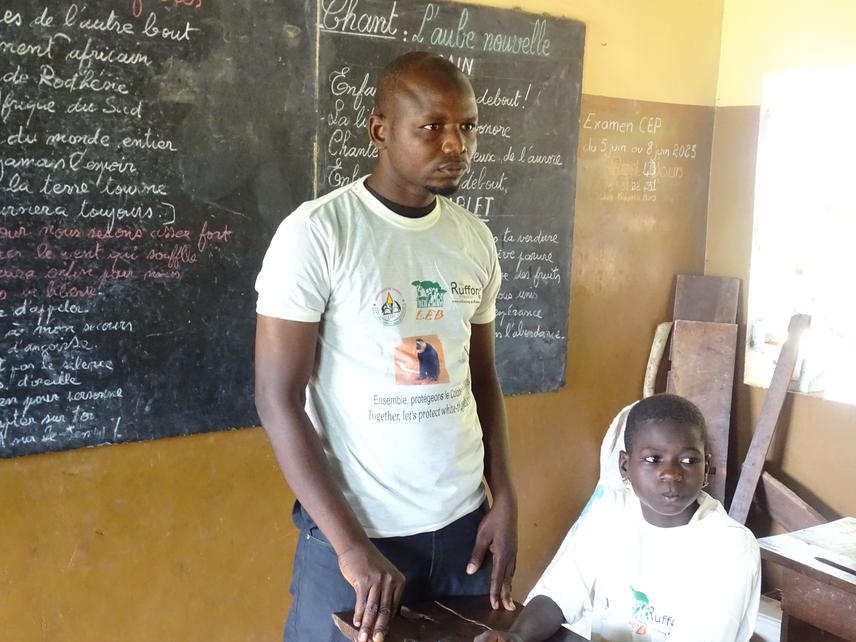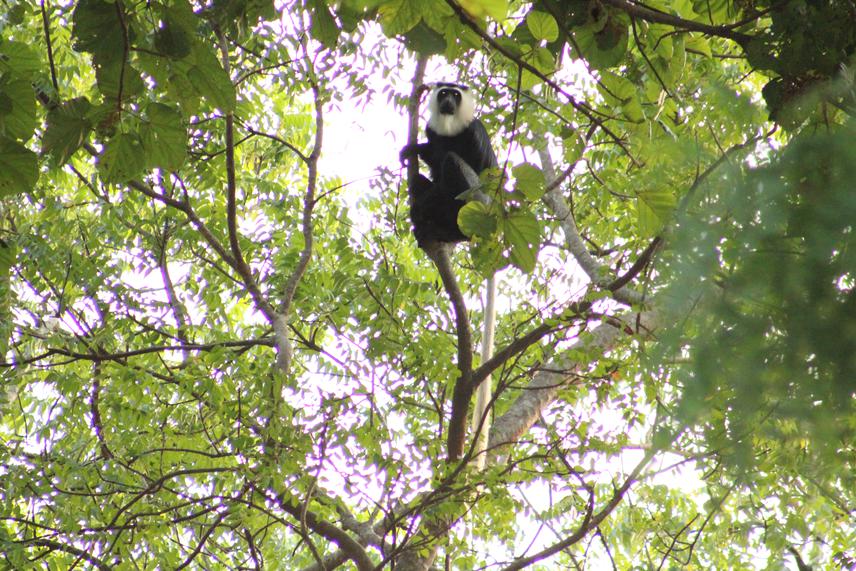Sadam Mama
Other projects
13 Feb 2023
Community Conservation of White-thighed Colobus (Colobus vellerosus), a Critically Endangered Species in the Gazetted Forest of Wari-Maro, Benin
During our 1st Rufford Small Grant, we noted the absence of recent, reliable data on the exact size of Colobus vellerosus populations and their habitats in the Kikélé Sacred Forest (KSF). Indeed, the KSF is the forest with the largest population of C. vellerosus in Benin, according to the latest IUCN assessment (Matsuda Goodwin et al., 2020).

Mama Sadam at a schoolchildren's environmental education session. ©Sadam Mama (2023).
Although the species is sacred, enjoying local protection in the Kikélé village, the intensification of riparian agricultural plots is causing individuals to move into unprotected peripheral areas. Intensive hunting in these peripheral areas has led to a drastic decline in C. vellerosus populations in recent years in the KSF (Chabi Ota, 2018). Similarly, some migrants ignore traditional beliefs and illegally cut down trees, which are very important plant species for primate diets (Chabi Ota, 2020). These practices have a negative impact on plant phenology, and consequently on the species' diet. Because the diet of C. vellerosus consists exclusively of leaves, flowers, fruit, seeds and tree bark (Djègo-Djossou et al., 2015). In addition, given the proximity of the forest to the Kikélé village, some inhabitants dump their garbage in the forest. They also use the forest as a toilet. Open defecation is a risk factor for zoonotic diseases that threaten human and non-human primate health (Muehlenbein, 2017). Also, non-biodegradable waste can have negative effects on forest biodiversity (Zohra, 2018). There is therefore an urgent need to set up awareness and environmental education programs for the people of the Kikélé village.

Colobus vellerosus. ©Sadam Mama (2023).
This project aims to: (i) Estimate the current population size of C. vellerosus in the KSF using camera traps, (ii) Characterize the habitats of C. vellerosus in the KSF and (iv) Develop awareness and environmental education programs on the conservation of threatened species and their habitats.
Header: Colobus vellerosus. © Sadam Mama (2023).